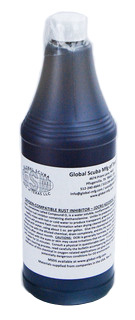So after a quick swish with the diluted phosphoric acid and then diluted blue gold (a rust inhibitor), it came out better, but not perfect.

I'm going to try the brush on the scuba tools that I showed early, then put it upside down, and use some PVC pipe and my air compressor to blow out all the crap. Hopefully tonight I'll get to that.
And yes, i realize this is more than good enough but the next experiment won't hurt.
I am trying to learn here, even if it is a lesson in futility.
I'm going to try the brush on the scuba tools that I showed early, then put it upside down, and use some PVC pipe and my air compressor to blow out all the crap. Hopefully tonight I'll get to that.
And yes, i realize this is more than good enough but the next experiment won't hurt.
I am trying to learn here, even if it is a lesson in futility.




